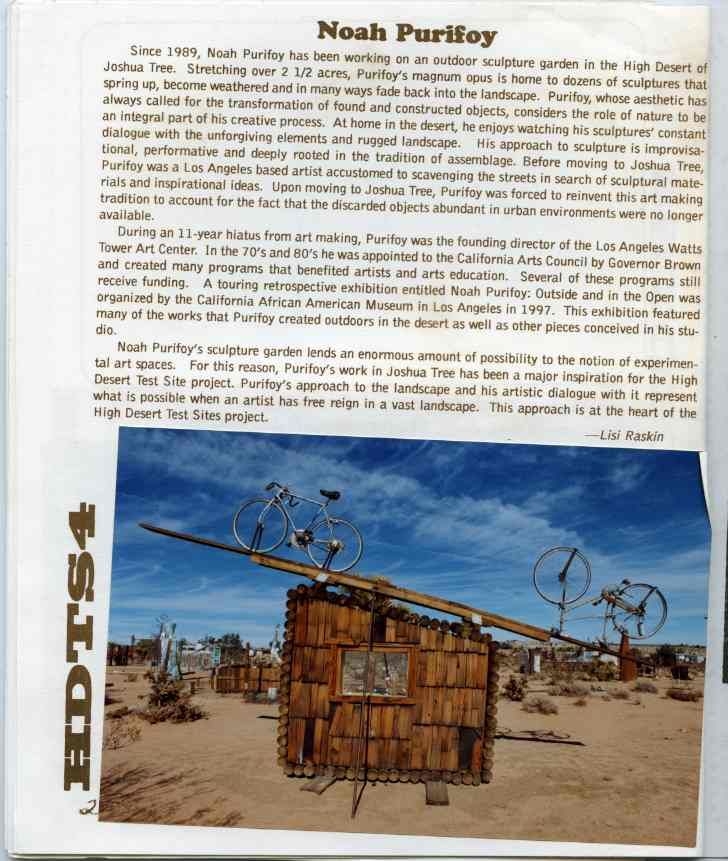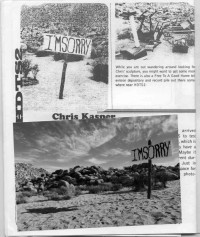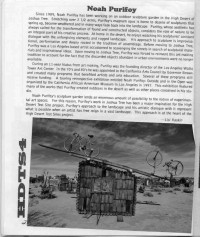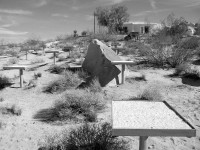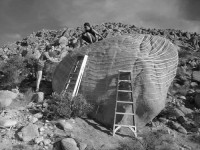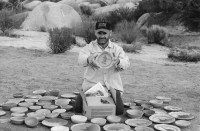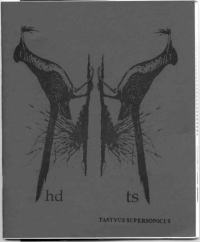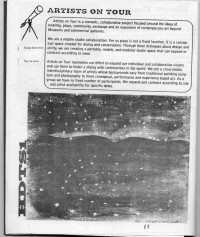Noah Purifoy Foundation
Since 1989, Noah Purifoy has been working on an outdoor sculpture garden in the High Desert of Joshua Tree. Stretching over 2 1/2 acres, Purifoy’s magnum opus is home to dozens of sculptures that spring up, become weathered and in many ways fade back into the landscape. Purifoy, whose aesthetic has always called for the transformation of found and constructed objects, considers the role of nature to be an integral part of his creative process. At home in the desert, he enjoys watching his sculptures’ constant dialogue with the unforgiving elements and rugged landscape. His approach to sculpture is improvisational, performative and deeply rooted in the tradition of assemblage. Before moving to Joshua Tree, Purifoy was a Los Angeles based artist accustomed to scavenging the streets in search of sculptural materials and inspirational ideas. Upon moving to Joshua Tree, Purifoy was forced to reinvent this art making tradition to account for the fact that the discarded objects abundant in urban environments were no longer available.
During an 11-year hiatus from art making, Purifoy was the founding director of the Los Angeles Watts Tower Art Center. In the 70’s and 80’s he was appointed to the California Arts Council by Governor Brown and created many programs that benefitted artists and arts education. Several of these programs still receive funding. A touring retrospective exhibition entitled Noah Purifoy: Outside and in the Open was organized by the California African American Museum in Los Angeles in 1997. This exhibition featured many of the works that Purifoy created outdoors in the desert as well as other pieces conceived in his studio.
Noah Purifoy’s sculpture garden lends an enormous amount of possibility to the notion of experimental art spaces. For this reason, Purifoy’s work in Joshua Tree has been a major inspiration for the High Desert Test Site project. Purifoy’s approach to the landscape and his artistic dialogue with it represent what is possible when and artist has free reign in a vast landscape. This approach is at the heart of the High Desert Test Sites project.
— Lisi Raskin (from the HDTS 1 catalogue)
¸.·ℳ¸.·´¨)𐌄 ¸.·*¨ɱ)
(¸*.ᴑ·´ (¸.ʀ·´ .·´🄨 ¸
NOVEMBER 23, 2002 - NOVEMBER 24, 2002
“High Desert Test Sites is a series of experimental art sites located along a stretch of desert communities including Pioneertown, Yucca Valley, Joshua Tree and 29 Palms. These locations provide alternative, free space for experimental work by both emerging and established artists.
The HDTS mission is to challenge traditional conventions of ownership, property and patronage. Most projects will ultimately belong to no one, and they are intended to melt back into the landscape as new ones emerge.
The High Desert Test Sites is a project organized by Andrea Zittel, John Connelly and Andy Stillpass.”
—from the HDTS 1 catalogue
